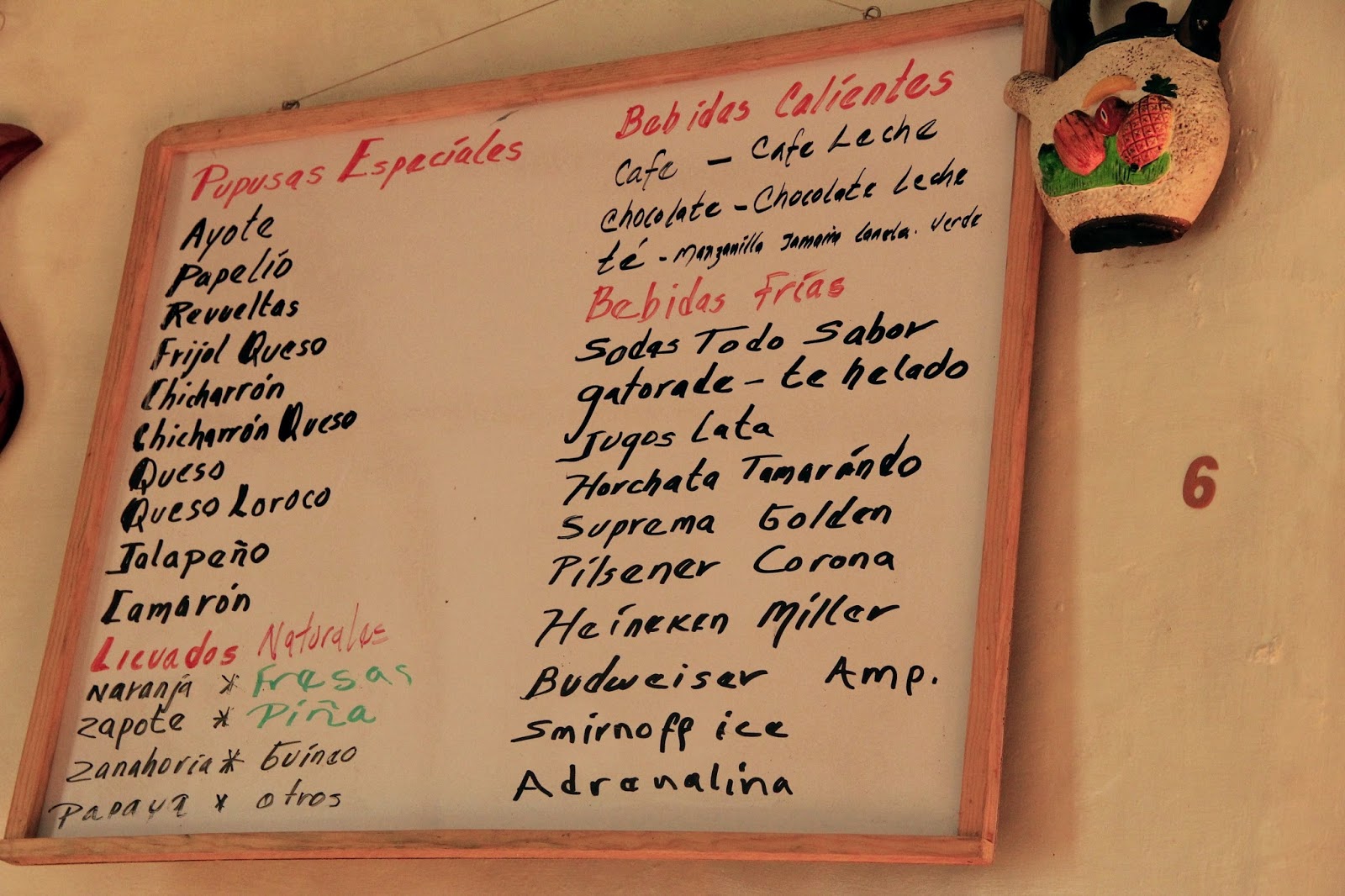A Beautiful Little Heaven… What could be better? How about when it has delicious food and drinks.
I spend a disturbingly large portion of my time abroad searching for my next meal. Maybe it’s a consequence of growing up in the bizarre food surplus of the Bay Area (quote from last night: “What, they’re closed? But it’s not even 10:30 yet, and I want gelato! Fine, let’s go to the 24-hour artisanal doughnut shop around the corner.”) or one too many dinners of squished granola bar dug out of the bottom of my bag, but when I find a good place to eat in a foreign town, it tends to anchor my mental map of the place.
So as far as I was concerned, El Cielito Lindo was the hub of Ataco, a small town of whitewash and vivid murals where women carried trays of fresh bread on their heads, in the highlands of El Salvador.
As in much of Latin America, much of the world really, lunch is the main meal in El Salvador, while breakfast and dinner are simpler and smaller. I know that’s healthier, and I know I need to adapt to the culture of the location, but...my day just doesn’t feel complete without a warm dinner. So when I walked the absurdly clean stone streets of Ataco and found the colorful pupuseria, I had to try it, even though it was a little late in the day, the sky already given over to violet and the last bars of birdsong.
The national food of El Salvador, pupusas are kind of a cornmeal pancake/tortilla filled with a variety of ingredients, the most common of which are cheese, refried beans, and shredded pork. They are similar to Colombia’s arepas, except while those use ordinary corn dough (and don’t always have filling), pupusas use nixtamal, which is cornmeal treated with an alkaline solution that helps peel the grains, accessing additional nutrients.
Not impressed yet? That process has been going on in this area for thousands of years. In Joya de Cerén, a village of the Pipil people that was buried by volcanic ash 2,000 years ago, they found the implements for making pupusas. Pompei didn’t have pupusas. I’m just saying.
 |
| No, it's not normal to have that many options. |
I sat at a solid wood table covered with the burlap sack of a local coffee grower and looked up at Cielito’s menu. Cheese, beans, and pork may be the normal fillings, but Cielito doesn’t stop there. They had every permutation of the three classics, plus jalapeño, prawn, and three things I’d never heard of.
I ordered one each of the unknowns, plus an horchata.
I’ve been drinking horchata for over twenty years, and love the sweet flavor of vanilla and cinnamon, but that was not what arrived in a tall glass. Every horchata I’d ever seen was white, unsurprising since it was made from rice. But this? This was brown. And the flavor…
I am not good at identifying ingredients, comically bad in fact, but something in this drink’s ancestry made sweet love with brown sugar. There was none of the starchy smoothness of rice, instead a deeper, nuttier flavor, with a subtle current of something almost...fruity?
But just like (what I now think of as) “Mexican” horchata, this Salvadoran stuff hit the tongue with so much sweetness you thought you wouldn’t want more. But then a second later...gimme more!
Then the pupusas arrived. The matron of the place, Mauda, left her telenovela to bring me a plate of steaming nixtamal pupusas with queso de loroco, ayote, and papelío. I tried to wait until they wouldn’t burn my fingers, but couldn’t hold back.
Loroco is an edible flower, and the cheese made with it had a much stronger flavor than most of the savory white cheeses of Latin America. Kinda like a gamey feta? It made for an interesting change of pace.
Ayote is a type of squash similar to a pumpkin, and they use the whole plant: flowers, stems, and shoots in addition to the fruit. It was a fairly subtle flavor, which I prefered to the loroco.
 |
| My hands were full of food, not camera but this dude I met in Guatemala could have been his brother. |
Papelío. I had no idea what this was, and l’internet now informs me that it’s a type of butterfly. Odds I ate butterfly? Not good, I’m guessing it’s a more poetic naming, but I have no idea what it was. But it was, unsurprisingly, delicious.
The pupusas were, of course, served with curtido, the customary tangy cabbage slaw made with vinegar and chili peppers, that is lightly fermented. Pupusas steaming on the plate, horchata in hand, I was smiling when the youngster walked by, saw me, and stopped mid-sentence to stare at me, somehow shyly.
I wasn’t the first tourist he’d seen, not by a longshot, but there are still not so many of us there as to be boring, and he giggled when I made a face at him and winked.
Delicious pupusas burning my fingers, new drink cooling my tongue, telenovelas and animated conversations bouncing around my ears, beautiful Salvadoran town to explore, and now this little dude’s laughter to top it all off?
This is why I love travel.


No comments:
Post a Comment